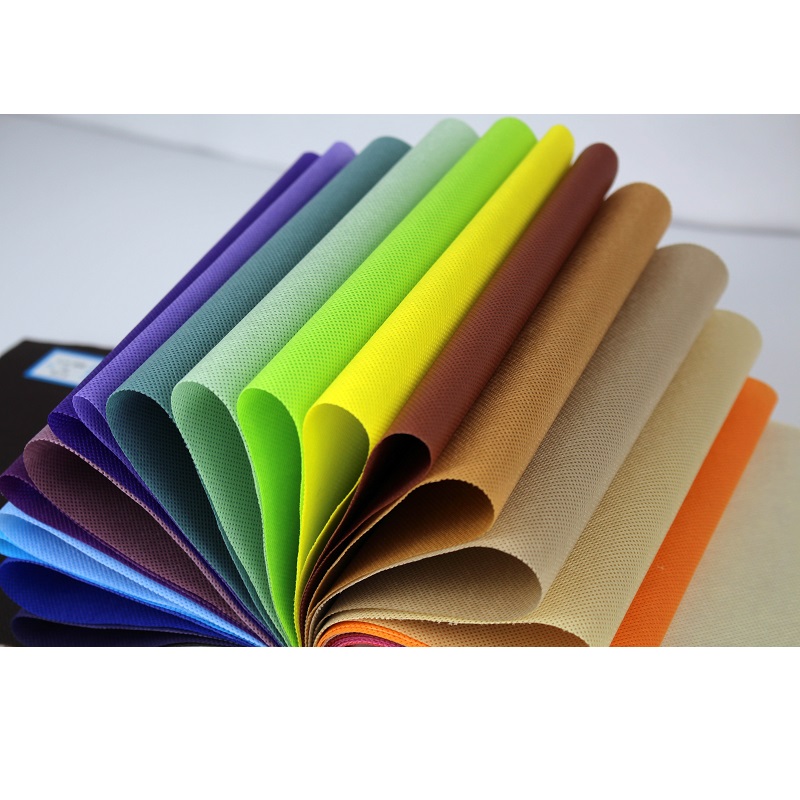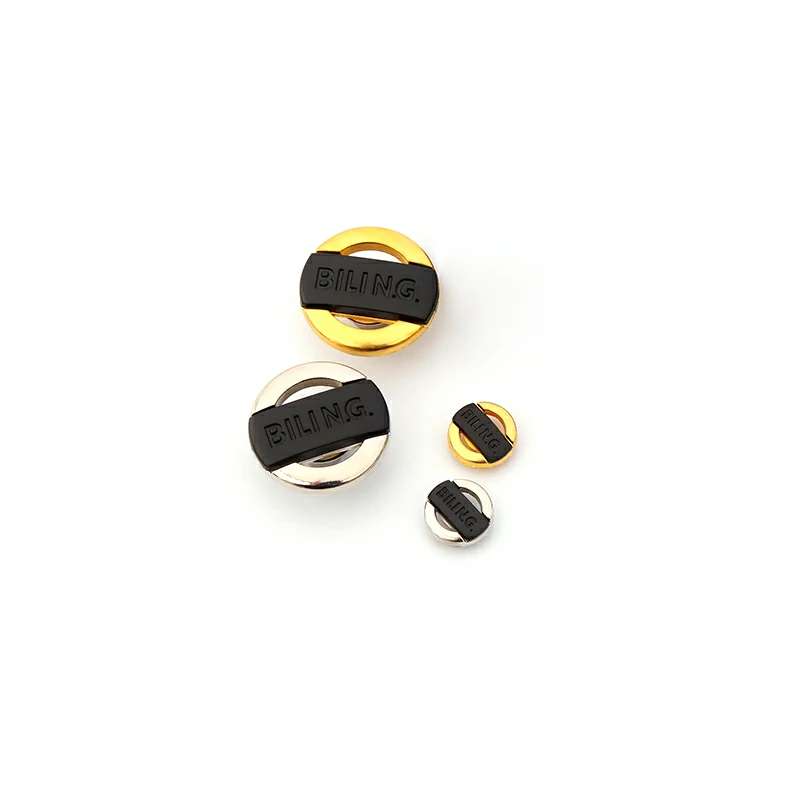Posted on August 23, 2023
What are some common materials used for the gate and body of resilient seated gate valves?
The gate and body of resilient seated gate valves are typically constructed using different materials, each chosen based on the specific application requirements.
Here are some common materials used for the gate and body of resilient seated gate valves:
Ductile Iron: Ductile iron is a widely used material for both the gate and body of resilient seated gate valves. It offers excellent strength, durability, and corrosion resistance. Ductile iron is suitable for a variety of applications, including water supply systems, wastewater treatment plants, and industrial processes.
Cast Iron: Cast iron is another common material for the gate and body of resilient seated gate valves. It provides good strength and corrosion resistance, making it suitable for general-purpose applications. Cast iron valves are often used in water and wastewater systems.
Stainless Steel: Stainless steel is chosen for its superior corrosion resistance properties. It is commonly used for the gate and body of resilient seated gate valves in applications involving corrosive fluids or environments. Stainless steel valves are often specified for chemical processing, marine, and offshore applications.
Bronze: Bronze is a material known for its excellent corrosion resistance and low friction properties. Resilient seated gate valves with bronze gates and bodies are commonly used in water supply systems, irrigation, and HVAC applications.
Carbon Steel: Carbon steel is a strong and durable material that is often used in industrial applications, including oil and gas, petrochemical, and power generation industries. Resilient seated gate valves with carbon steel gates and bodies are suitable for applications involving higher pressures and temperatures.
PVC (Polyvinyl Chloride): PVC is a lightweight and cost-effective material that offers excellent corrosion resistance to a wide range of fluids. Resilient seated gate valves with PVC gates and bodies are commonly used in water and wastewater systems, irrigation, and chemical applications.
Other Materials: Depending on the specific application requirements, other materials such as alloy steels, nickel alloys, or exotic materials may be used for the gate and body of resilient seated gate valves. These materials are chosen for their enhanced corrosion resistance, temperature resistance, or compatibility with specific fluids.
The selection of materials for the gate and body of resilient seated gate valves should consider factors such as the nature of the fluid being handled, the operating conditions (including pressure and temperature),resilient seated gate valve and any specific requirements for corrosion resistance or mechanical properties. It is recommended to consult with valve manufacturers or specialists to determine the most appropriate material selection for a particular application.
What are the advantages of using ductile iron for the gate and body of resilient seated gate valves?
Using ductile iron for the gate and body of resilient seated gate valves offers several advantages. Here are some key advantages:
Strength and Durability: Ductile iron is known for its high strength and durability. It is significantly stronger than cast iron, making it suitable for applications that require robust and long-lasting valves. Ductile iron gate and body can withstand high pressures and provide reliable performance over an extended service life.
Corrosion Resistance: Ductile iron exhibits good corrosion resistance, especially when compared to cast iron. It can withstand exposure to various corrosive environments, including water, sewage, and industrial fluids. This corrosion resistance makes ductile iron suitable for use in water supply systems, wastewater treatment plants, and other applications where corrosion may be a concern.
Cost-Effectiveness: Ductile iron is generally more cost-effective than materials like stainless steel or bronze. It offers a good balance between performance, durability, and cost, making it a cost-efficient choice for many applications. This affordability is especially advantageous for projects with budget constraints.
Machinability: Ductile iron is relatively easy to machine, allowing for precise manufacturing and customization of valves. It can be readily shaped and formed into complex geometries, facilitating the production of gate valves with accurate dimensions and smooth surfaces.
Impact Resistance: Ductile iron has excellent impact resistance, which makes it less susceptible to cracking or damage caused by external forces or sudden pressure changes. It can withstand mechanical stresses and shocks, making it suitable for applications where the valve may be subjected to high-pressure surges or frequent opening and closing.
Noise and Vibration Reduction: Ductile iron gate valves have inherent properties that help dampen noise and vibrations during operation. The material’s inherent damping capacity minimizes the transmission of noise and vibrations through the valve, contributing to a quieter and smoother operation.
Ease of Installation and Maintenance: Ductile iron gate valves are relatively easy to install and maintain. They are lighter in weight compared to materials like stainless steel, making handling and installation more convenient. Ductile iron also requires minimal maintenance, reducing downtime and associated costs.
It is worth noting that the suitability of ductile iron for the gate and body of resilient seated gate valves depends on the specific application requirements, including the fluid characteristics, operating conditions, and industry standards. Consulting with valve manufacturers or specialists can provide further guidance on material selection based on the application’s specific needs and considerations.
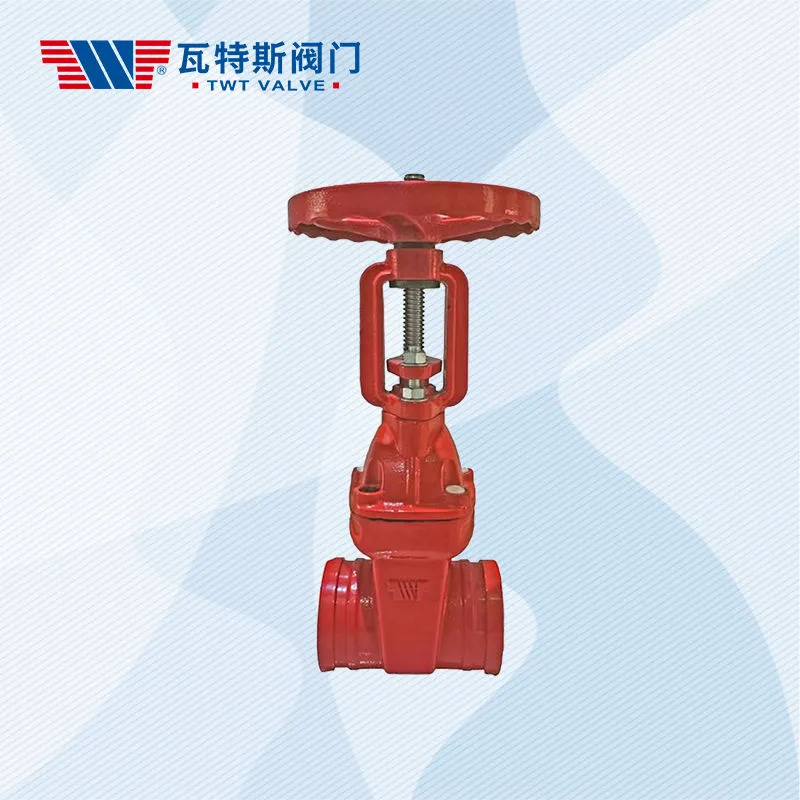
Posted on August 12, 2023
The advantage of twin size bedding set
Here are some of the main advantages of twin size bedding sets:
Space saving
Twin beds take up less floor space than a full or queen size bed. This makes them ideal for small bedrooms.
Versatility
Twin beds can easily be pushed together to function like a larger bed when needed. Or they can be separated for individual sleeping.
Good for kids
Twin beds are a popular choice for children’s bedrooms as they grow into toddlers and tweens. The size is appropriate as kids transition from cribs.
Budget friendly
Twin bedding sets tend to be more affordable than larger sizes. This makes them practical for dorm rooms, guest rooms, or second bedrooms.
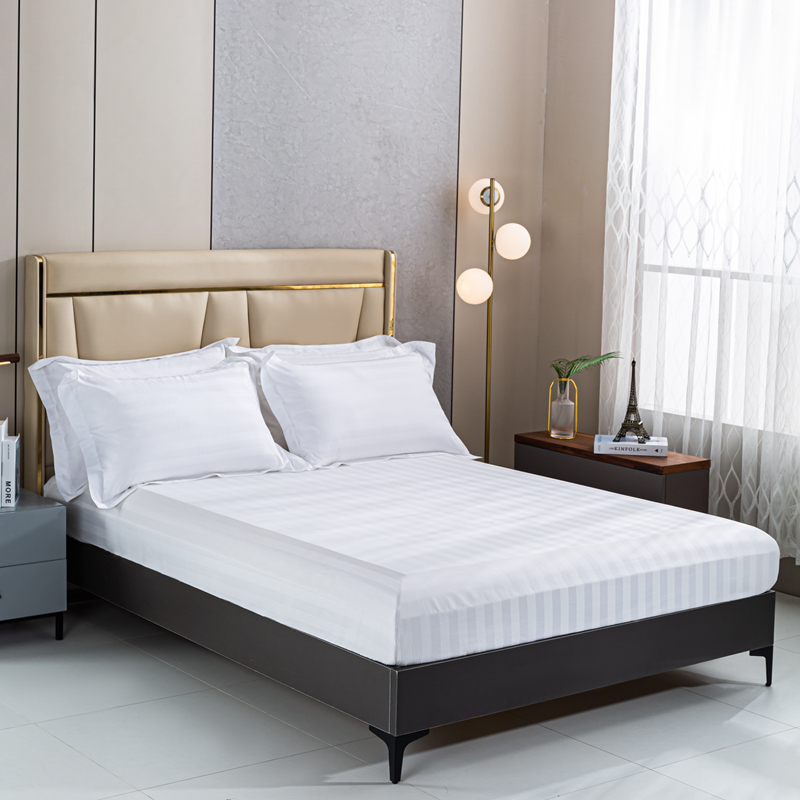
Mix and match ability
With twins, you can choose different bedding sets for each bed. This allows kids especially to express their individual styles.
Easy to move
Twin mattresses and bed frames are lighterweight than larger sizes. This makes them conveniently portable if needed.
Suitable for small spaces
Twin beds take up minimal floor area in tight spaces like studio apartments or cabin bunk rooms.
Individual sleep preferences
Each person gets their own comfortable sleep surface with individual twins rather than sharing one large bed.
So in summary, twin size bedding sets save space, are affordable and versatile for different living situations.
Updated on August 10, 2023
Are there any specific criteria or qualifications I should consider when choosing a block making machine manufacturer?
When choosing a block making machine manufacturer, it’s important to consider several criteria and qualifications to ensure you select a reliable and suitable supplier.
Here are some key factors to consider:
Experience and Reputation: Look for manufacturers with a proven track record and a good reputation in the industry. Consider their years of experience in manufacturing block making machines and their portfolio of successful projects. Check for customer reviews, testimonials, and references to gauge their reliability and quality of products.
Quality Standards and Certifications: Verify if the manufacturer adheres to recognized quality standards and holds relevant certifications. For example, ISO certifications ensure that the manufacturer follows international quality management standards. Look for certifications specific to the construction industry, such as CE (Conformité Européene) marking for compliance with European standards.
Technology and Innovation: Assess the manufacturer’s commitment to technology and innovation. Look for manufacturers who incorporate advanced features, automation, and efficiency-enhancing technologies into their block making machines. A manufacturer that invests in research and development demonstrates their dedication to improving their products.
Customization and Flexibility: Determine if the manufacturer can meet your specific requirements and provide customization options. Different construction projects may have unique needs for block sizes, shapes, and features. A manufacturer that offers flexibility and customization capabilities can tailor the machine to suit your project requirements.
After-Sales Support and Service: Consider the manufacturer’s after-sales support and service offerings. A reliable manufacturer should provide technical support, spare parts availability, and assistance with machine installation, training, and maintenance. Prompt and efficient after-sales service is vital to minimize downtime and ensure smooth operations.
Price and Value for Money: While price is a factor, it should not be the sole determining factor. Consider the overall value for money, which includes factors such as product quality, durability, performance, and after-sales support. Evaluate the long-term benefits and return on investment (ROI) the machine can provide.
Customer References and Site Visits: Request customer references from the manufacturer and contact them to gather feedback on their experience with the manufacturer’s block making machines. If possible, arrange a site visit to observe the machines in operation and assess their performance, build quality, and efficiency firsthand.
Warranty and Service Contracts: Inquire about the warranty offered by the manufacturer and the terms and conditions associated with it. Understand what is covered under warranty and for how long. Additionally, discuss the possibility of service contracts for regular maintenance and support.
By considering these criteria, you can make an informed decision when selecting a block making machine manufacturer that meets your specific requirements and ensures the long-term success of your construction projects.
How can I inquire about the warranty and service contracts offered by a manufacturer?
To inquire about the warranty and service contracts offered by a block making machine manufacturer, you can follow these steps:
Contact the Manufacturer: Reach out to the manufacturer directly through their provided contact information, such as their website, email address, or phone number. Initiate communication expressing your interest in their block making machines and your specific inquiry about warranty and service contracts.
Request Detailed Information: Clearly state your request for information regarding the warranty coverage and duration offered by the manufacturer. Ask for specifics on what components or parts of the machine are covered, as well as any exclusions or limitations. Inquire about the process for filing warranty claims and the expected response time.
Ask about Service Contracts: Inquire about the availability of service contracts or maintenance agreements. Ask for details about the services included in the contracts, such as routine maintenance, troubleshooting support, and availability of spare parts. block making machinery Understand the duration, cost, and renewal terms of the service contracts.
Seek Clarification: If the manufacturer provides you with warranty and service contract information, review it carefully. If there are any terms or conditions that you don’t fully understand, seek clarification from the manufacturer. It’s important to have a clear understanding of what is covered and what steps you need to take to avail yourself of warranty or service benefits.
Discuss Customization and Special Requirements: If you have specific customization needs or special requirements for warranty or service contracts, discuss them with the manufacturer. They may be able to accommodate your requests or provide tailored solutions based on your specific needs.
Evaluate the Offer: Assess the warranty coverage, service contract terms, and associated costs provided by the manufacturer. Compare them with other manufacturers or suppliers to determine the best fit for your requirements.
Request a Written Agreement: If you decide to proceed with a particular manufacturer, request a written agreement that clearly outlines the warranty terms and conditions, as well as the details of any service contracts. Having a written agreement ensures clarity and helps avoid any misunderstandings in the future.
Remember to keep records of all communications, including emails, agreements, and any other relevant documentation related to the warranty and service contracts. This will help you in case you need to refer back to them or file a warranty claim in the future.
By actively engaging with the manufacturer and seeking detailed information, you can make an informed decision about the warranty and service contracts associated with the block making machine you intend to purchase.
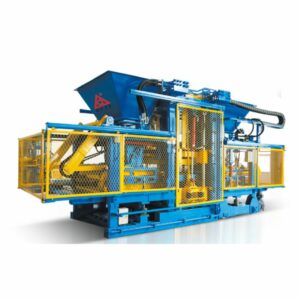
Posted on July 28, 2023
The Uses And Benefits Of 20 Gauge Fine Wire Staples
Staples are a versatile fastening solution for a wide range of lightweight materials and thinner substrates. 20 gauge staples offer a more precise fit for joining delicate items, thanks to their thinner wire diameter of just 0.04 inches. Their finer tips and wires cause less damage to fragile materials while still providing a secure hold.
At 0.04 inches in diameter, 20 gauge staples are the thinnest commonly available option. They’re ideal for stapling paper, fabric, vinyl, cardboard and other materials that are 1/8 inch thick or less. Because they do not overpower thin materials, 20 gauge staples are suitable for crafts, bookbinding, upholstery and other detailed applications that require precision stapling.
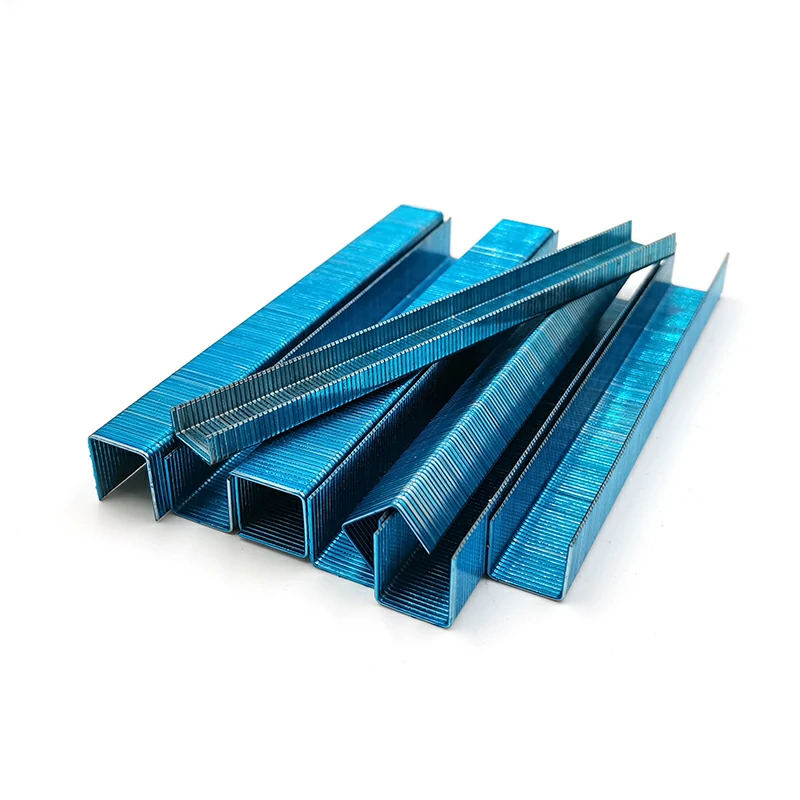
Common uses for 20 gauge fine wire staple include:
• Stapling paper: Useful for craft projects, office documents, posters, presentations and samples. The thin wires can pierce and fold paper without tearing.
• Fabric joining: Used for sewing notions, mending and assembly of garments and soft goods. 20 gauge staples become practically invisible once fastened.
• Attaching vinyl trim: Perfect for joining thin strips of vinyl to form corners, finishing edges and covering framing. The staples can pierce vinyl without tearing holes.
• Bookbinding and pamphlet making: Necessary for precise gathering, folding and assembling prints, brochures, magazines and more. They stitch pages firmly without compressing or damaging them.
• Upholstery: Useful for securing pattern pieces, trim and strapping during the upholstery process. The staples cause minimal breakage and leave small holes that can be easily filled.
Specification of 20 gauge fine wire staples
20 gauge fine wire staples typically come with 1/4 inch to 1/2 inch crowns. This crown height provides the ideal clinch for securely holding thin materials together. They are available in a wide range of lengths from 1/4 inch up to 1 inch, allowing you to choose the exact staple to fit your application.
The staple legs on 20 gauge options are narrower but longer compared to heavier gauges. This allows them to pierce and grip thin materials without curling or kinking, even when bent double. The fine wires also release more easily from staple guns, helping to reduce jams.
When shopping for 20 gauge staples, look for options made from wire that is electro-galvanized or coated with a rust-inhibiting material. This protects the staples from corrosion that could weaken their grip over time.
The key benefits of 20 gauge fine wire staples can be summarized as follows:
• The diminutive 0.04 inch wire diameter of 20 gauge staples enables them to grip lightweight materials under 0.125 inches thick with pinpoint accuracy, avoiding undue damage or tearing.
• These fine wire staples are well-suited for joining thin items like paper, 20 gauge wide crown stapler fabric and vinyl sheets, perfectly clutching lightweight components weighing under an ounce.
• Despite their narrow gauge, 20 gauge staples reliably clasp delicate materials firmly in place, with the long staple legs releasing easily from staple guns without kinking or curling.
• Once fastened, 20 gauge staples blend inconspicuously into thin materials, all but disappearing from view.
• The accurate yet unobtrusive grip afforded by 20 gauge staples lends them to a wide range of applications involving the careful assembly of office documents, craft projects, upholstery and other components requiring precise joining of fine-gauge goods.
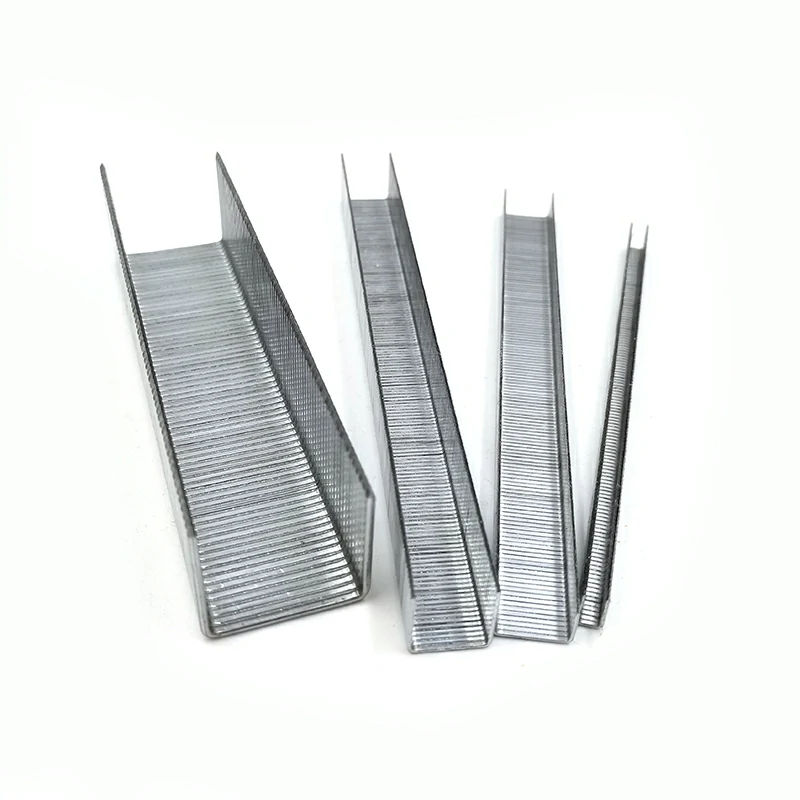
Posted on July 28, 2023
Introduction to Butterfly Valves and Their Applications
Butterfly valves are a type of industrial valve that is commonly used to regulate the flow of fluid in pipelines. They are named after their disc shape, which rotates 90 degrees to control the flow of fluid. Butterfly valves are often used in applications where a quick shutoff is required, as they can be closed with a simple quarter-turn of the lever or actuator.
Butterfly valves come in several different types, including wafer, lug, flanged, and double flanged butterfly valves. Each type has its own unique features and advantages, and is designed to meet specific application requirements.
Wafer butterfly valves are designed to fit between two pipeline flanges, and do not require a separate set of bolts for installation. They are commonly used in low-pressure applications, such as water treatment, HVAC systems, and food processing.
Lug butterfly valves have threaded inserts on the flanges, which allow the valve to be bolted to the pipeline using separate bolts. They are commonly used in applications where the valve needs to be removed without disrupting the rest of the pipeline, such as in water treatment, petrochemical, and power generation.
Flanged butterfly valves have flanges that are bolted directly to the pipeline flanges. They are commonly used in high-pressure applications, such as oil and gas pipelines, chemical processing, and power plants.
Double flanged butterfly valves are similar to flanged butterfly valves, but have two flanges that bolt directly to the pipeline. They are commonly used in applications where the valve needs to be installed in a horizontal pipeline, as they provide additional support and stability.
Overall, butterfly valves are an important component in regulating the flow of fluid in pipelines. Their ease of use, quick shutoff, and low maintenance requirements make them a popular choice in a variety of industrial applications. It’s important to select the right type of butterfly valve for the specific application and consult with a valve expert to ensure proper installation and performance.
What factors should I consider when selecting a butterfly valve for my specific application?
When selecting a butterfly valve for your specific application, there are several factors that should be considered to ensure proper performance and reliable operation. Here are some key factors to consider:
Flow Rate: The flow rate of the fluid being handled is an important consideration, as it will determine the size of the valve required. lt butterfly valve A valve that is too small for the flow rate can cause excessive pressure drop, while a valve that is too large can be inefficient and costly.
Pressure Rating: The pressure rating of the valve should be carefully chosen to ensure that it can withstand the maximum pressure in the system. Failure to do so can result in leaks, damage to the valve, and even catastrophic failure.
Temperature: The temperature of the fluid being handled is an important consideration, as it will affect the choice of materials and the type of valve required. High-temperature applications require materials with high-temperature resistance, while low-temperature applications may require materials with low-temperature flexibility.
Media Type: The type of fluid being handled is an important consideration, as it will affect the choice of materials and the type of valve required. Corrosive or abrasive fluids require materials with high corrosion resistance or abrasion resistance.
End Connections: The type of end connections required will depend on the specifics of the piping system. Flanged, wafer, and lug connections are common options, and the choice of connection will affect the installation and maintenance of the valve.
Actuation: The method of actuation required will depend on the specific application and the operating conditions. Manual actuation is suitable for low-flow or low-pressure applications, while pneumatic or electric actuation is required for high-flow or high-pressure applications.
Standards and Certifications: The valve should meet industry standards and certifications, such as ANSI, API, and ISO, to ensure that it is suitable for the specific application and complies with regulatory requirements.
Overall, the selection of a butterfly valve depends on the specific application and the required performance characteristics. It’s important to consult with a valve expert to select the right type of butterfly valve for the specific application and ensure proper installation and performance.

Updated on June 12, 2023
Primary Services Provided by Inbound Call Centers
Inbound call centers are designed to handle incoming calls from customers, clients, or other stakeholders. These call centers are typically used by businesses and organizations to provide customer support, answer questions, and manage inquiries and complaints.
Here are some of the primary services provided by inbound call centers:
Customer service: Inbound call centers are often used to provide customer service and support to customers who have questions or concerns about a product or service. Call center agents can help customers troubleshoot issues, provide product information, and address complaints and concerns.
Order taking and processing: Inbound call centers can also be used to take and process orders from customers. Call center agents can help customers place orders over the phone, process payments, and provide order status updates.
Technical support: Inbound call centers can provide technical support to customers who are experiencing issues with a product or service. Call center agents can help customers troubleshoot technical issues, provide software support, and assist with hardware issues.
Appointment scheduling: Inbound call centers can be used to schedule appointments and manage calendars. Call center agents can help customers schedule appointments, confirm appointments, and reschedule appointments as needed.
Help desk support: Inbound call centers can provide help desk support to employees who are experiencing technical issues or need assistance with software or hardware. call center desk setup Call center agents can help troubleshoot issues, provide guidance, and escalate issues as needed.
Overall, inbound call centers provide a range of services that help businesses and organizations manage customer inquiries and support needs. By providing high-quality customer service and support, businesses can improve customer satisfaction and loyalty, and ultimately drive revenue and growth.
How can inbound call centers improve customer satisfaction?
Inbound call centers can play a critical role in improving customer satisfaction by providing high-quality customer service and support.
Here are some ways inbound call centers can improve customer satisfaction:
Quick response times: Customers appreciate quick response times when they have a question or concern. Inbound call centers can improve customer satisfaction by answering calls quickly and efficiently, and minimizing hold times.
Personalized service: Customers appreciate personalized service that makes them feel valued and important. Inbound call centers can improve customer satisfaction by addressing customers by name, understanding their needs and preferences, and providing tailored solutions to their inquiries.
Empathetic communication: Customers appreciate empathetic communication that shows the call center agent understands and cares about their concerns. Inbound call centers can improve customer satisfaction by actively listening to customers, showing empathy and understanding, and providing solutions that meet their needs.
Knowledgeable staff: Customers appreciate knowledgeable staff who can answer their questions and provide helpful solutions. Inbound call centers can improve customer satisfaction by hiring and training staff who are knowledgeable about the products or services they are supporting, and who can provide accurate and helpful information.
Follow-up and resolution: Customers appreciate follow-up and resolution to their inquiries or concerns. Inbound call centers can improve customer satisfaction by following up with customers after their call, and ensuring that their inquiry or concern has been fully resolved.
Overall, inbound call centers can improve customer satisfaction by providing high-quality customer service and support that is quick, personalized, empathetic, knowledgeable, and results-oriented. By prioritizing customer satisfaction, businesses can build strong and loyal relationships with their customers, and ultimately drive growth and success.

Posted on June 12, 2023
Are there any downsides to wearing cotton elastane men’s underpants?
Cotton elastane men’s underpants are a popular type of men’s underwear that combines the comfort and breathability of cotton with the stretch and flexibility of elastane.
Here are some of the key features and benefits of cotton elastane men’s underpants:
Comfort: Cotton is a soft and breathable material that is comfortable to wear, while elastane provides additional stretch and flexibility for a snug and comfortable fit.
Support: Cotton elastane men’s underpants provide support for the genital area, helping to prevent chafing and discomfort during physical activity.
Moisture-wicking: Cotton is a natural moisture-wicking material that helps to keep the skin dry and comfortable, reducing the risk of irritation and infection.
Durability: Cotton elastane men’s underpants are durable and long-lasting, making them a good investment for everyday wear.
Range of styles: Cotton elastane men’s underpants come in a range of styles, including briefs, trunks, and boxer briefs, allowing men to choose the style that best suits their preferences and needs.
Easy care: Cotton elastane men’s underpants are easy to care for and can be machine washed and dried, making them a convenient and practical choice for everyday wear.
While cotton elastane men’s underpants have many benefits, there are also a few downsides to consider:
Less breathable than pure cotton: While cotton elastane men’s underpants are still breathable, the addition of elastane can reduce the amount of air flow and ventilation compared to pure cotton underpants. This can lead to increased sweating and discomfort in some men, Cotton Or Cotton Elastan Men’s Underpants supplier particularly in hot and humid climates.
Possible allergic reactions: Some men may have an allergic reaction to the elastane in cotton elastane underpants, which can cause skin irritation, itching, and rashes. It is important to check the fabric and materials of any underpants before purchasing them, particularly if you have sensitive skin.
May lose shape over time: The elastane in cotton elastane underpants can stretch out over time, which can lead to a less snug and supportive fit. This can be particularly problematic for men who need extra support or have specific needs for their underpants.
May be more expensive: Cotton elastane men’s underpants may be more expensive than other types of men’s underwear, particularly if they are high-quality and designed for specific purposes such as sports or exercise.
Overall, while cotton elastane men’s underpants have many benefits, it is important to consider the downsides before making a purchase. It is also important to choose the right size and style of underpants to ensure maximum comfort and support.
pportive, and durable choice for men’s underwear. They provide the benefits of both cotton and elastane, making them a popular choice for men who want the best of both worlds when it comes to underwear.
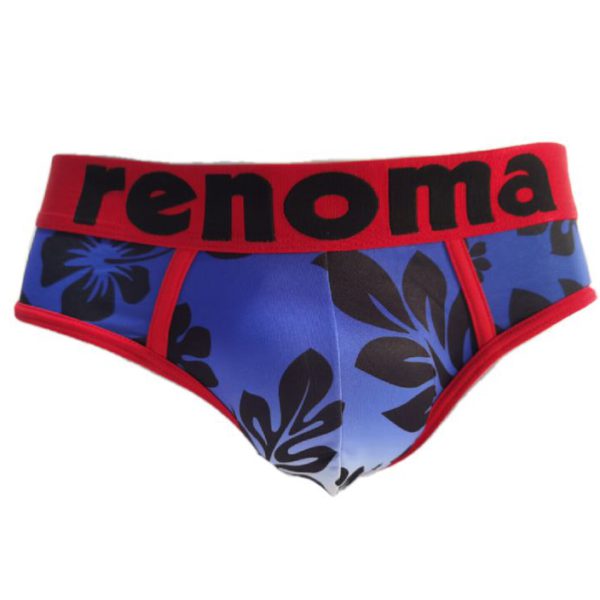
Posted on June 12, 2023
Common Types Of Office Workstations
Office workstations are designed to provide employees with a comfortable and functional workspace that supports productivity and collaboration. There are many different types of office workstations available, each with their own advantages and features.
Here are some common types of office workstations:
Cubicle workstation: Cubicle workstations are a classic office design that offer privacy and individual working space. They typically feature a desk, chair, and dividers to create a semi-private workspace. Cubicles can come in a range of sizes and configurations to suit different office layouts and employee needs.
Open-plan workstation: Open-plan workstations are designed to promote collaboration and communication between employees. They typically feature a large table or desk with multiple workstations, allowing employees to work together on projects and share resources. Open-plan workstations can be customized with dividers or privacy panels to create a more private working space when needed.
Standing workstation: Standing workstations are becoming increasingly popular in modern offices, as they offer a number of health benefits, including improved posture, reduced back pain, and increased energy levels. They can come in a range of designs, including adjustable desks that can be raised or lowered to accommodate different heights.
Shared workstation: Shared workstations are designed to be used by multiple employees throughout the day. They typically feature a desk and chair that can be easily adjusted to suit different users. Shared workstations can be a good option for hot-desking or for companies that have a large number of employees with flexible working arrangements.
Reception workstation: Reception workstations are designed for use in reception areas or other public spaces. They typically feature a desk, seating area, and storage space for files and other materials. Reception workstations can be customized with branding or other design elements to create a welcoming and professional environment.
Overall, there are many different types of office workstations available, each with their own features and advantages. By choosing the right workstation for your office, you can create a comfortable and functional workspace that supports employee productivity and well-being.
What are some ergonomic features to look for in a standing workstation?
When looking for a standing workstation, it’s important to prioritize ergonomic features to ensure maximum comfort and productivity.
Here are some ergonomic features to look for in a standing workstation:
Adjustable height: A standing workstation should be adjustable in height to accommodate different users and tasks. The desk should be easy to raise and lower, office workstation furniture and should be able to accommodate both standing and sitting positions.
Footrest: A footrest can be a useful addition to a standing workstation, as it can help to reduce fatigue and improve circulation in the legs.
Anti-fatigue mat: An anti-fatigue mat can be placed under the standing workstation to provide cushioning and support for the feet, reducing discomfort and fatigue.
Keyboard tray: A keyboard tray can be a useful addition to a standing workstation, as it can help to reduce strain on the wrists and arms. The keyboard tray should be adjustable in height and angle to ensure maximum comfort and productivity.
Monitor height: The height of the monitor should be adjustable to ensure that it is at eye level when standing. This can help to reduce strain on the neck and shoulders.
Cable management: Cable management is an important consideration for any workstation, but is particularly important for standing workstations. Cables should be neatly organized and out of the way to avoid tripping hazards and to maintain a clean and organized workspace.
Overall, when choosing a standing workstation, it’s important to prioritize ergonomic features to ensure maximum comfort and productivity. By choosing a workstation with adjustable height, a footrest, anti-fatigue mat, keyboard tray, adjustable monitor, and cable management, you can create a comfortable and functional workspace that supports your health and well-being.

Posted on May 24, 2023
How can I ensure that the polypropylene membrane is installed correctly?
Polypropylene is a synthetic thermoplastic polymer that is widely used in a variety of industrial and consumer applications, including waterproofing. Polypropylene is well-suited for waterproofing applications due to its high resistance to water and other liquids, as well as its durability and flexibility.
Polypropylene waterproofing membranes are commonly used in construction applications, such as roofs, foundations, and basements. These membranes are typically composed of multiple layers of polypropylene that are fused together to create a barrier that is resistant to water and other liquids. The membranes may also be reinforced with additional materials, such as fiberglass or polyester, to provide additional strength and durability.
Polypropylene waterproofing membranes offer several benefits, including:
Resistance to water and other liquids: Polypropylene is highly resistant to water and other liquids, making it an ideal material for waterproofing applications.
Durability: Polypropylene is a durable material that can withstand exposure to environmental factors, such as UV radiation, extreme temperatures, and chemicals.
Flexibility: Polypropylene is a flexible material that can conform to irregular surfaces, making it well-suited for use in a variety of waterproofing applications.
Easy installation: Polypropylene waterproofing membranes are relatively easy to install, requiring only basic tools and techniques.
Cost-effective: Polypropylene waterproofing membranes are often less expensive than other types of waterproofing materials, making them a cost-effective option for many applications.
Overall, polypropylene waterproofing is a reliable and effective solution for a wide range of waterproofing applications. However, it is important to ensure that the polypropylene membrane is installed correctly, and that appropriate measures are taken to maintain it over time. This may include regular inspections, repairs to any damage or wear, and periodic cleaning or maintenance to ensure that the membrane remains effective and long-lasting. Additionally, it is important to select the appropriate type of polypropylene membrane for the specific application, taking into account factors such as the expected exposure to water, the type of substrate, and any environmental or other considerations that may impact the performance of the membrane over time.
Proper installation of a polypropylene waterproofing membrane is essential to ensure that it is effective in preventing water intrusion and protecting the underlying structure.
Here are some steps you can take to ensure that the polypropylene membrane is installed correctly:
Hire a qualified contractor: The installation of a polypropylene membrane is a specialized task that requires experience and training. Hire a qualified contractor who has experience with installing polypropylene membranes in the specific application you require.
Prepare the substrate: Proper preparation of the substrate is essential for the effective installation of a polypropylene membrane. polypropylene waterproof The substrate should be clean, dry, and free of any debris, loose material, or contaminants that may interfere with the adhesion of the membrane.
Select the appropriate membrane: There are several types of polypropylene waterproofing membranes available, each with different properties and performance characteristics. Select the appropriate membrane for the specific application, taking into account factors such as the expected exposure to water, the type of substrate, and any environmental or other considerations.
Install the membrane correctly: Follow the manufacturer’s installation instructions carefully to ensure that the membrane is installed correctly. This may involve using a specific type of adhesive, applying the membrane in a specific sequence, or taking other measures to ensure proper installation.
Inspect the installation: After the membrane has been installed, inspect it carefully to ensure that it has been installed correctly. This may involve checking for any gaps, wrinkles, or other signs of improper installation, as well as verifying that the membrane is adhering properly to the substrate.
Test the membrane: Once the membrane has been installed and inspected, conduct a water test to verify that it is effectively waterproofing the area. This may involve flooding the area with water and observing whether any leaks or water intrusion occurs.
Maintain the membrane: Proper maintenance of the polypropylene membrane is essential to ensure that it remains effective over time. This may involve periodic inspections, repairs to any damage or wear, and periodic cleaning or maintenance to ensure that the membrane remains effective and long-lasting.
Overall, proper installation of a polypropylene waterproofing membrane is essential to ensure that it is effective in preventing water intrusion and protecting the underlying structure. By hiring a qualified contractor, preparing the substrate, selecting the appropriate membrane, installing it correctly, inspecting the installation, testing the membrane, and maintaining it over time, you can ensure that your polypropylene membrane is installed correctly and ready to perform when needed.
